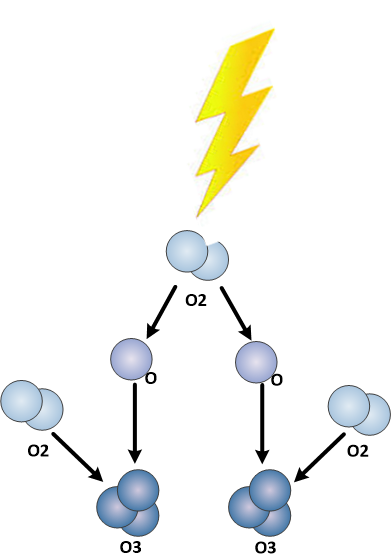Choosing the right ozone generator for your application is a daunting task. This guide is meant to help dispell the myths and give you the information you need to make the right decision.
Dry air vs Oxygen feed-gas:
Ozone can be produced from either oxygen or dry-air feed-gas. Ozone is produced more efficiently from oxygen than air as there is more oxygen to produce ozone from. Most ozone generators produce 2 – 3x more ozone from oxygen than from air. However, producing oxygen requires a great deal of energy. Therefore, review ozone generator options, oxygen source options, and dry-air options to ensure the most cost effective and energy efficient option for long-term operation.
When ozone is used for water treatment it is almost always more efficient to produce ozone from oxygen due to the increased ozone concentration and increased solubility of ozone into water.
Ozone generators producing ozone from air will be exposed to more potential for contamination of the ozone generating cell and may require more maintenance than ozone generated from oxygen.
If using an oxygen concentrator factor the maintenance costs of the oxygen concentrator or air compressor in your system operational costs.
Air cooled vs Water cooled corona cell:
Converting oxygen to ozone requires an energy transfer. This energy transfer will produce heat as a by-product. This heat must be removed from the ozone generator either with fans for air-cooling, water for water cooling, or both. Most small ozone generators are air cooled, most large ozone generators are water cooled.
Air cooled ozone generators are simple and require less overall system components. Therefore, air cooled ozone generators are commonly used for small to mid-sized ozone applications.
As the scale of ozone production increases the heat-load increases, therefore large ozone generators are all water cooled as air cooling would not be a reasonable option.
Air cooled ozone generators will typically run warmer than water cooled ozone generators and produce ozone less efficiently. Therefore, lower ozone concentrations are typical, along with higher feed-gas flows required.
Water cooled ozone generators require cooling water passing near high voltages used for ozone production. This can be a safety hazard in some locations, most notably dirty environments where air quality is poor and dirt may build-up on the ozone generator components.
UV vs Corona Discharge vs Electrolytic:
Ozone can be produced via UV light, corona discharge, or electrolytic. Click link below for more details on how these methods work. Overview listed here.
Ozone is produced from air at very low concentrations. UV light cannot produce ozone at higher concentrations than about 1% by weight, and most are far below that. A UV ozone generator is a great option for high flow – low concentration ozone applications. Air treatment applications commonly use UV ozone generators with great success. Due to the low concentration of ozone production UV ozone generators are not applicable for many water treatment application. Also, UV ozone generators are not cost effective at ozone production rates greater than about 10 g/hr.
Corona Discharge Ozone Generators
Most every industrial ozone generator uses corona discharge to produce ozone. Ozone can be produced at up to 20% by weight with no limit to ozone production. Ozone is produced from oxygen or dry-air, if air is used it must be dry duet to by-product creation in the ozone generation process.
Ozone is produced electrolytically directly within water, this eliminates the need for gas to liquid contacting equipment used for UV or Corona Discharge ozone generators. Water must be very clean for electrolytic ozone production due to contamination and break-down of the anode and cathode used for this method.
Other helpful links below
– How to read performance chart?
– Ozone Output vs Concentration


I appreciate the commentary on this web site, it definitely gives it that community experience!
An intriguing discussion is worth comment. I believe that you
need to write more on this subject, it might not
be a taboo matter but typically folks don’t discuss
these issues. To the next! Cheers!!
I am just opened your sight to understand Online calculators for ozone output conversions so you asked to say my comment I am sorry I have no comment